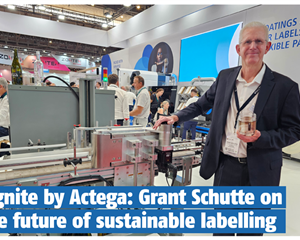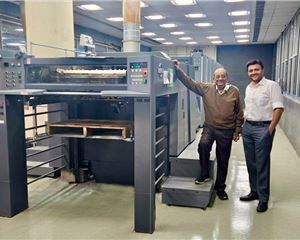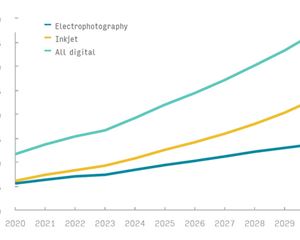Union Budget 2022: What’s in it for print?
While concurring with the government’s claim that the Union Budget 2022-2023 will change the scale of India's economy, few print industry executives also ask, what’s in it for print? How will the Rs 7.5-lakh crore infrastructure development projects benefit HUL or for that matter Parksons?
03 Feb 2022 | By Noel D'Cunha
Kamal Chopra, managing director, Foil Printers, Ludhiana. See today’s budget highlights, yet another jolt to the printing industry - after Dairy and Calendars, Paperless Billing will finish one more office stationery item from the printers menu. With more than 90% micro and small printers in the country, such changes will prove to be another shroud nail. It’s a pity that in India, the internet is yet to reach 53% of people, yet we are going paperless. Commercial printers are already suffering due to decreasing demands. You know Government already decided not to get the Diaries and Calendars printed. On the other end with the promotion of online studies, as said in the present budget, the demand for school stationery and books is also likely to decrease further. Moreover 18% GST has made the printed products dearer for the common users.
Rakesh Sodhi, president, Indian Printing & Allied Machinery Manufacturers’ Association. The printing and packaging industry is a capital goods industry. The Government is planning a gradual phase-out of concessional tariff rates offered for capital goods and project imports. This is a welcome step, as the machines which are being manufactured in India by several manufacturers need not be imported. However, exemptions for advanced types of machinery and intermediates and raw materials that are not manufactured within the country will continue. A few exemptions are being introduced on inputs, to encourage domestic manufacturing of capital goods.
It is good to see that the Emergency Credit Line Guarantee Scheme has helped 130-lakh MSMEs and mitigate the impact of the pandemic. And Govt has extended this Scheme up to March 2023 along with the extension of guaranteed cover by another Rs 50,000-crore, bringing the total cover under the scheme to Rs 5-lakh crore now, which is highly appreciable. Rs 2-lakh crore additional credit for Micro and Small Enterprises to be facilitated under the Credit Guarantee Trust for Micro and Small Enterprises (CGTMSE). Raising and Accelerating MSME performance (RAMP) programme with an outlay of Rs 6,000-crore to be rolled out.
The government has also emphasised skill development. Start-ups will be promoted to facilitate ‘Drone Shakti’ and for Drone-As-A-Service (DrAAS). Secondly, Digital Ecosystem for Skilling and Livelihood (DESH-Stack e-portal) will also be launched to empower citizens to skill, reskill or upskill through online training.
Overall it seems a good budget, let’s see its impact on the Industry.
Samir Patkar, president, Heidelberg India. The Union Budget per se has not been a sectoral budget like we used to have in the previous years. Those budgets used to have allocations for industries, for example, chemical, steel, pharma, Alcobev, FMCG and so on. Since last year the budget focus more on reforms, transformation and paving long term sustainable growth. The Union Budget 2022 is a similar exercise to projecting a foundational development of a New India over a period and a launch pad for a 25 year growth story ….. Amrit Kaal as one indicates !
It is in this direction that the Budget has proposed Rs 7.50-lakh crore in Capex, which is almost USD 100 billion for this year, which the Government says will be used for investment in creating infrastructures such as roads, ports, infrastructure, and airports among others. This if implemented will improve logistics, connect cities and states and in turn help in good manufacturing, easy access for goods and services within India, and help Greenfield projects to come up alongside the infrastructure that will be developed. This will also further enhance the growth of manufacturing sectors such as FMCG, pharma, Food and Beverages and automobiles which in turn shall foster growth of the printing and packaging industry.
This of course will not happen with the year 2022-23. It would at most kick-off, but it must have a certain completion timelines, though the long-term shot for develop India is 25 years, or Amrit kaal, as the FM said, we have entered. But, for such a transformation, to make India resilient, robust, consistent double-digit growth over a period is also of the essence. The budget has the desired ingredients to fulfil the same.
The government is in the quest of going digital or digitising processes. So, you have AI into business, going online for everything. While this will have a positive impact on some industries, it will continue to have an adverse impact on the commercial print businesses especially with e-learning thrust from the government budget notes. We will carefully watch this development in the next months.
The government has suggested that intergovernmental billing will now be done via e-bills which further reduces print. The use of paper will be taken off. So obviously some printer, whether he is printing offset, digital or web, is going to suffer. So, I am seeing this Budget with caution, as far as commercial print is concerned. However in the general categories where the industry is backing a come back on revival of pre covid levels we see an high level of activity again in marketing, Advertisement spend and this would help the commercial printers to make a comeback with necessary print volumes
Now coming to GDP@ 9.6% is the projected growth for 2022-23, though I am a bit surprised at that number, considering we had negative growth in a few quarters of FY 21 and a comeback in FY 22 to almost 7.5%. Be that as it may, even if we consider 9.6% as the GDP projection, and thumb rule 1.5-time perspective, we can be expected the printing industry to grow at 15%. But that to me, looks like a statement at the moment. This still depends on many factors like the pandemic continuation, new variants hitting us from time to time and possible calculated lockdowns.
Domestic and International travel is still limited, marketing activities are still shunted and almost every promotional event in the print and packaging world is still getting postponed. The overall mood is however getting better, investments are coming back slowly and employment has started again in our industry. The industry is on autopilot and will continue to do what it takes to survive and push forward its growth agenda.
Price escalations with paper, print consumables and equipment are a reality. Global supply chain disruption and delays in sourcing is also a reality and will continue in FY 23. The industry has not seen any remedial measures from the budget or any specific relaxations on import duties to this effect.
So, typically, FY 22 is also going to end up as a relatively challenging year for most in the graphic art industry, including us as supply chain players.
So, my question, from a print perspective, is that while the long term effect of the Rs 7.5-lakh crore CAPEX given for infrastructure development – we reap the benefits of travel time reduction, reduced logistics and manufacturing cost, increase in exports which will help our industry further …. But, for the short term how will the leading brand owners benefit from it? Or for that matter, even print converters / supply chains in our industry? For print to grow, the budget needed to put money in the hands of people who could drive more consumption, which this Budget has failed to do.
Prashant Atre, managing director, Toyo Ink Arets. Budget 2022 separates from all the other budgets since independent India. The Budget is a step towards the policy document for the next 25 years of roadmap/directional change for the country. The next 25 years period will be called Amrut Kaal, when India completes 100 years of independence. It is important to note that the election in five states have not influenced this budget, as this budget did not offer any freebie, which a commendable on the part of the government.
The budget was like a soft launch of a digital era at all levels, right from optics during the speech of FM to contents in her speech. We will see some major disruptions in the near future due to digital access to all parts of India, even to small villages through fibre optics networks. Green energy and EV will get a major boost from the government for the next few decades, which is very important for sustainability.
But what’s in it for the printing industry, is a million-dollar question.
I will not list the positives of this budget, which you might have been already been educated about through WhatsApp university and TV debates but will rather caution on some of the negatives (for us).
The government’s decision to launch digital universities and schools through digital mediums can seriously affect the business volumes of our publication and education printing segment on a long-term basis. While commercial printing, newspaper printing are already declining and it is largely replaced with a digital medium (without printing).
An introduction of 2.5% customs duty from zero duty on paper waste will have a price impact on carton packaging.
Therefore, it is time for the printing industry to collective brainstorm for re-organising some of our business segments, which are likely to get diminished in coming years. However, print-packaging (carton and flexible), digital printing and POP displays will continue to stay and grow.
Overall, this budget is good from the long-term business perspective.
Suresh Shah, managing director, Nulith Graphics. It's good. The gist of this budget is a massive increase of around 35% in capital expenditure, infra and housing among others. GDP growth estimate of 9.2%. Targeted deficit to be kept under 4.5%. Measures for relaxation in tax compliances by allowing revision of return with tax payment in two years and minor tweaks to rationalise tax surcharge rates. Overall good, though not spicy.
Upendra Deglurkar, general manager, Bobst India. The Budget has more hits than misses, infra Capex push will have a multiplier effect on the economy.
Saurabh Agarwal, senior director and general manager, Label and Packaging Materials (LPM) South Asia, Avery Dennison. The Union Budget for fiscal 2022-23 is certainly a well-balanced and progressive budget that is focussed on creating jobs and employability, boosting manufacturing, help agri-economy and infrastructure development. The Budget has given a boost to the railway and infrastructure sector with the plan to develop 400 new generation Vande Bharat trains and expansion of national highway network by 25,000 km by 2022-23 under the Gati Shakti plan. This is a welcome step that would lead to the new growth trajectory of the economy and create more job opportunities for the youth. Also, the government’s decision to launch Digital DESH e-portal for the skilling, reskilling, and upskilling of the youth is definitely a great incentive keeping in mind the importance of upskilling and reskilling in the present scenario. Overall, this budget assures and advances the opportunity for Atma Nirbhar Bharat amid the pandemic period.
Sumanth Volety, director, Sukee Print Pack, Bengaluru. I think the budget largely has focused on Capex with its huge allocation and on capital expenditures, this time with investments of more than 2-lakh crores additionally allocated this year when compared to last taking it to a total of 7.5-lakh crores which I think would lead to a lot of industries to flourish further and will have a positive impact on the packaging printing as well eventually either directly or indirectly will spur the demand further. Overall a growth-oriented budget.












 See All
See All